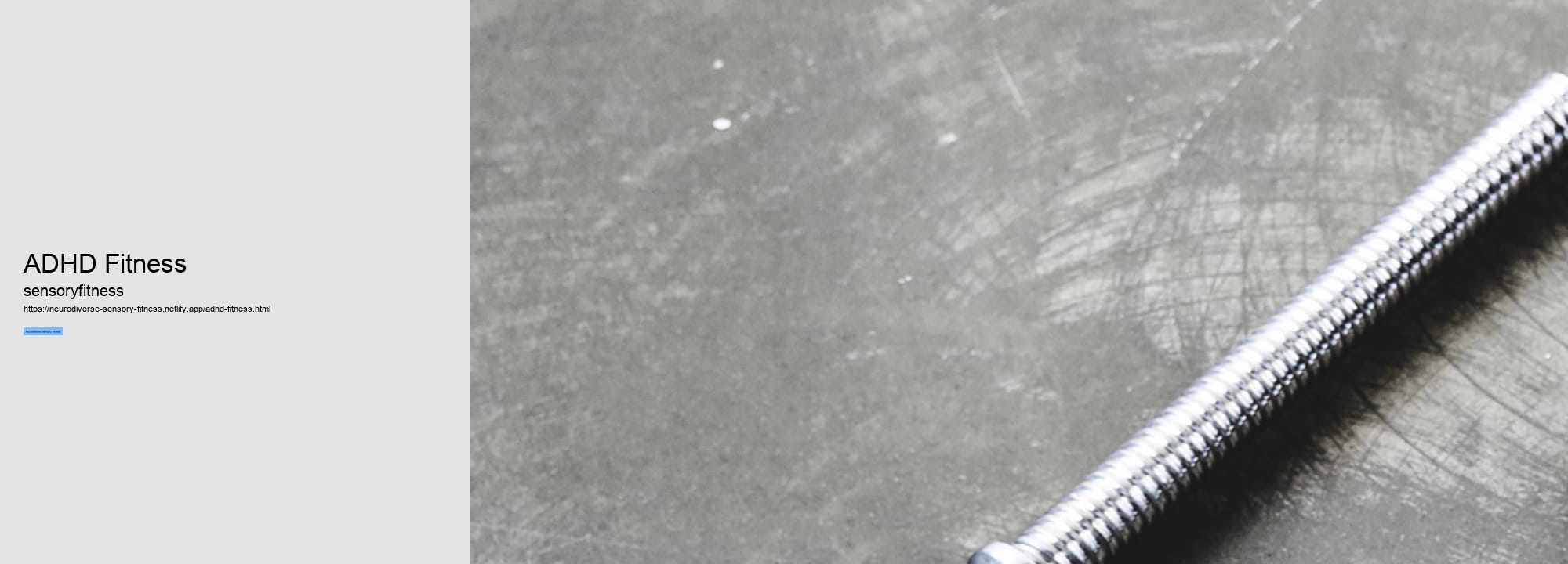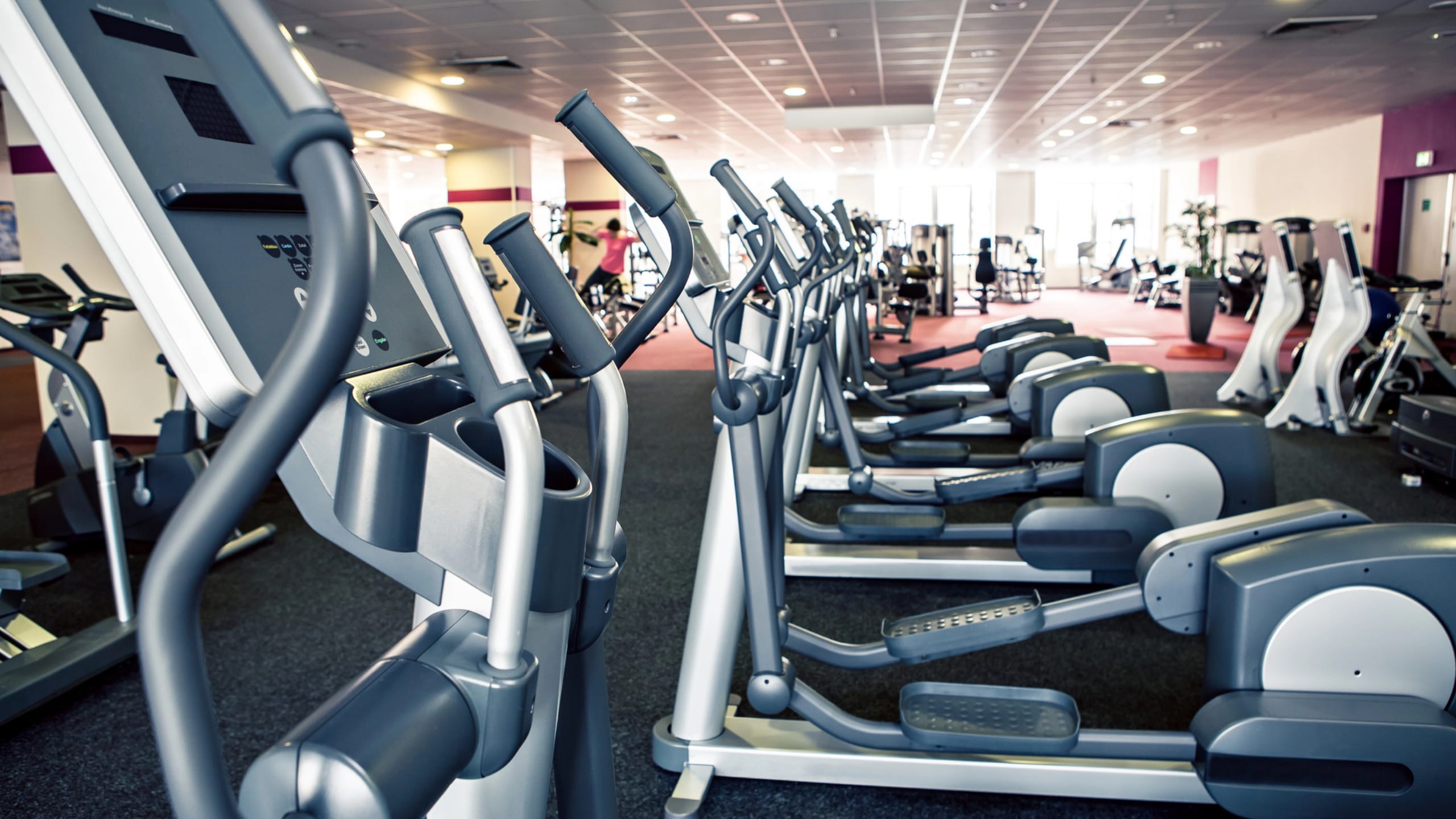

Additionally, offering options for both individual and group activities can cater to different preferences and comfort levels. Another key consideration when creating a sensory-friendly fitness routine is providing clear instructions and support throughout the session. Using simple language, breaking down tasks into manageable steps, and offering encouragement and reinforcement can help individuals feel confident in their abilities and stay motivated throughout the workout. It is also important to allow for breaks as needed and respect individual boundaries when it comes to physical contact or personal space.
By taking the time to understand each individual's unique needs and preferences, we can design an inclusive environment where everyone feels welcome and supported in their journey towards better health and well-being. Through patience, communication, and collaboration with professionals who specialize in working with neurodiverse populations, we can create a safe space where all individuals can thrive physically, mentally, emotionally while enjoying the benefits of regular physical activity. How to incorporate sensory activities into your workout for neurodiverse individualsWhen it comes to incorporating sensory activities into workouts for neurodiverse individuals, there are many strategies that can be utilized to enhance the overall exercise experience.
One way to incorporate sensory activities into workouts is by utilizing different textures and materials. For example, using textured mats or equipment can provide tactile stimulation while exercising. This can help individuals with sensory processing issues feel more grounded and engaged in their workout.
Music has been shown to have a powerful impact on mood and motivation during exercise. Neurodiverse individuals may benefit from choosing music that is calming or energizing based on their individual preferences. Visual stimuli can also play a key role in enhancing sensory experiences during workouts.
Incorporating colorful visuals or patterns into the workout space can help individuals stay focused and engaged throughout their exercise routine. In addition to these sensory strategies, mindfulness techniques such as deep breathing exercises or guided imagery can be helpful for promoting relaxation and reducing stress during physical activity. These techniques can help neurodiverse individuals stay present and connected to their bodies while exercising.
By utilizing a variety of sensory strategies such as textures, music, visuals, and mindfulness techniques, individuals can create a more personalized and engaging workout routine that meets their unique needs. How to tailor fitness programs to accommodate different sensory needs in neurodiverse individualsWhen it comes to creating fitness programs for neurodiverse individuals, it is important to consider their unique sensory needs.
By tailoring fitness programs to accommodate these sensory needs, we can create an inclusive and supportive environment that promotes physical health and well-being. One key consideration when designing fitness programs for neurodiverse individuals is to provide options for different sensory preferences.
By offering a variety of equipment and exercises that cater to these preferences, we can ensure that everyone feels comfortable and engaged during their workout. In addition to sensory preferences, it is also important to consider individual differences in motor skills and coordination.
Some neurodiverse individuals may have challenges with balance or coordination, which can impact their ability to participate in certain types of exercises. By providing modifications or adaptations that address these challenges, we can help everyone access the benefits of physical activity. Another important aspect of accommodating sensory needs in neurodiverse individuals is creating a safe and predictable environment. This may involve setting clear expectations for behavior, providing visual schedules or cues, and offering opportunities for breaks or downtime as needed. By establishing a routine and structure that supports each individual's sensory needs, we can help them feel more comfortable and confident in their fitness program. Overall, tailoring fitness programs to accommodate different sensory needs in neurodiverse individuals requires creativity, flexibility, and empathy.
Through thoughtful planning and collaboration with professionals who specialize in neurodiversity, we can ensure that our fitness programs are truly accessible to all. How to use adaptive equipment to enhance sensory fitness for neurodiverse individualsAdaptive equipment can play a crucial role in enhancing sensory fitness for neurodiverse individuals. By utilizing specialized tools and devices, we can create a more inclusive environment that supports the unique sensory needs of those with conditions such as autism, ADHD, or sensory processing disorder. One key aspect of using adaptive equipment is to understand the specific sensory challenges faced by each individual. For example, some people may be hypersensitive to certain stimuli, while others may seek out additional sensory input to feel regulated.
There are many different types of adaptive equipment that can be used to enhance sensory fitness. Weighted blankets or vests, for instance, can provide deep pressure stimulation that helps calm an overstimulated nervous system. Fidget toys and chewable jewelry can offer oral sensory input for those who seek out opportunities for mouthing and chewing. Sensory swings or rocking chairs can provide vestibular input that promotes balance and coordination. When using adaptive equipment, it's important to introduce it gradually and allow individuals time to acclimate to the new sensations.
Consistency is key in building a routine that supports their sensory needs. Incorporating adaptive equipment into daily routines can help neurodiverse individuals regulate their senses and improve their overall well-being. Whether at home, school, or in community settings, providing access to these tools can empower individuals to better navigate their environment and engage in activities that bring them joy. By recognizing the importance of adaptive equipment in enhancing sensory fitness for neurodiverse individuals, we can create a more inclusive society where everyone has the support they need to thrive. Let's continue exploring innovative ways to utilize these tools and promote greater understanding and acceptance of neurodiversity.


How to make exercise more enjoyable and engaging for neurodiverse individuals through sensory integrationExercise is a crucial component of overall health and well-being for everyone, including neurodiverse individuals. However, for some people with sensory processing differences, traditional forms of exercise may not be as enjoyable or engaging. This can make it challenging to stay motivated and consistent with a fitness routine.
Sensory integration involves incorporating activities that stimulate the senses in order to improve focus, coordination, and overall physical wellness. By tailoring exercise routines to include sensory-rich experiences, individuals with sensory processing differences can better connect with their bodies and find pleasure in movement.
One approach is to use equipment and props that provide tactile or proprioceptive input, such as therapy balls, resistance bands, or textured surfaces. These tools can help individuals better regulate their sensory systems while engaging in physical activity.
This could involve playing music during workouts to enhance auditory stimulation, using scented oils or aromatherapy diffusers to create a calming atmosphere, or incorporating visual cues like colorful markers or lights to increase visual engagement. In addition to adding sensory-rich experiences to workouts, it's important to consider individual preferences and sensitivities when designing exercise routines for neurodiverse individuals.
Some people may have a heightened sensitivity to certain stimuli, while others may seek out intense sensations. By taking these factors into account and providing options for customization, you can help create a more inclusive and enjoyable fitness experience. Overall, the key to making exercise more enjoyable and engaging for neurodiverse individuals through sensory integration is to prioritize individual needs and preferences.
The Benefits of Neurodiverse Sensory Fitness ProgramsNeurodiverse sensory fitness programs offer a multitude of benefits for individuals of all abilities. These programs are designed to cater to the unique sensory needs of each participant, no matter their neurology.
One of the primary benefits of neurodiverse sensory fitness programs is the promotion of overall health and wellness. Engaging in regular physical activity has been shown to improve cardiovascular health, strengthen muscles, and increase flexibility.
Furthermore, these programs can also help individuals regulate their emotions and reduce stress levels. Many people with neurodivergent conditions such as autism or ADHD have difficulty processing sensory information, which can lead to feelings of overwhelm or anxiety.


By providing a structured environment where participants can engage in sensory activities while exercising, these programs help individuals learn how to manage their emotions and cope with stress in a healthy way. Another significant benefit of neurodiverse sensory fitness programs is the social aspect. Exercise classes or group activities allow participants to connect with others who share similar experiences and challenges. This sense of community can be incredibly empowering and supportive for individuals who may feel isolated or misunderstood in other settings. In addition, these programs also promote inclusivity and acceptance among all participants.
This inclusive approach helps break down barriers between people of different backgrounds and abilities, fostering greater understanding and empathy within the community. Overall, the benefits of neurodiverse sensory fitness programs are vast and impactful. From improving physical health to enhancing emotional regulation and fostering social connections, these programs offer something for everyone regardless of their neurology. By embracing diversity and celebrating individual differences, we can create a more inclusive society where everyone has the opportunity to thrive.
It is essential to provide environments that cater to the diverse needs of all individuals, including those with sensory processing differences. By understanding and accommodating these unique requirements, we can ensure that everyone has the opportunity to participate in physical activities and enjoy the benefits of exercise. When designing sensory fitness spaces for individuals with neurodiversity, there are several key considerations to keep in mind. First and foremost, it is crucial to create a welcoming and comfortable environment that minimizes sensory overload.
Additionally, it is important to offer a variety of equipment and activities that cater to different sensory preferences. For example, some individuals may benefit from tactile or proprioceptive input, while others may prefer visual or auditory stimuli. By offering a range of options, we can ensure that everyone can find activities that they enjoy and feel comfortable participating in. Inclusive sensory fitness spaces should also be designed with accessibility in mind.
This includes ensuring that all equipment is easily reachable and usable for individuals of varying abilities. Additionally, it is important to provide clear signage and guidance for navigating the space, as well as trained staff who are knowledgeable about neurodiversity and how to support individuals with different needs. Overall, creating inclusive sensory fitness spaces for individuals with neurodiversity requires thoughtfulness, creativity, and a commitment to diversity and inclusion. By prioritizing the unique needs of all individuals, we can create environments where everyone feels welcome, supported, and able to thrive. Ultimately, by embracing neurodiversity in our fitness spaces, we can promote inclusivity, empowerment, and well-being for all members of our community. The Role of Sensory Integration Therapy in Improving Physical and Cognitive Functioning in Neurodiverse IndividualsSensory integration therapy plays a crucial role in enhancing both the physical and cognitive functioning of neurodiverse individuals.
By incorporating various sensory experiences into therapy sessions, such as swinging, brushing, and deep pressure activities, sensory integration therapy helps individuals regulate their responses to sensory input. This can lead to improvements in motor skills, attention span, emotional regulation, and overall quality of life for neurodiverse individuals. Physical benefits of sensory integration therapy include improved coordination, balance, and body awareness. Engaging in activities that stimulate different senses can help individuals develop better proprioception and vestibular function, leading to increased confidence in movement and participation in daily activities. Furthermore, the cognitive benefits of sensory integration therapy are significant.
Overall, the role of sensory integration therapy in improving physical and cognitive functioning in neurodiverse individuals cannot be overstated. By addressing underlying sensory processing challenges through targeted interventions tailored to each individual's unique needs and preferences, therapists can help unlock the potential for growth and development in those with neurodiverse conditions. Through a holistic approach that considers both the physical and cognitive aspects of functioning, sensory integration therapy empowers individuals to thrive in all areas of their lives. Strategies for Incorporating Sensory Activities into Fitness Routines for People with Autism, ADHD, and other Neurodevelopmental DisordersIncorporating sensory activities into fitness routines can be incredibly beneficial for individuals with autism, ADHD, and other neurodevelopmental disorders. These activities can help improve focus, regulate emotions, and enhance overall well-being.
One strategy for incorporating sensory activities into fitness routines is to start small and gradually increase the intensity. For example, you could begin with gentle stretching exercises or simple yoga poses before moving on to more vigorous activities like running or jumping. This gradual approach can help individuals with sensory sensitivities become more comfortable with physical activity over time. Another strategy is to provide a variety of sensory input during fitness routines. This could include incorporating different textures, sounds, and smells into the environment.
The ADHD brain typically exhibits differences in certain neurotransmitter activity and brain structures, particularly those involved in attention, impulse control, and executive function.
The top five benefits of fitness include improved cardiovascular health, increased muscular strength and endurance, enhanced flexibility, weight management, and better mental health and mood.
ADHD cannot be "overcome" in the traditional sense, but it can be effectively managed through various treatments and strategies.